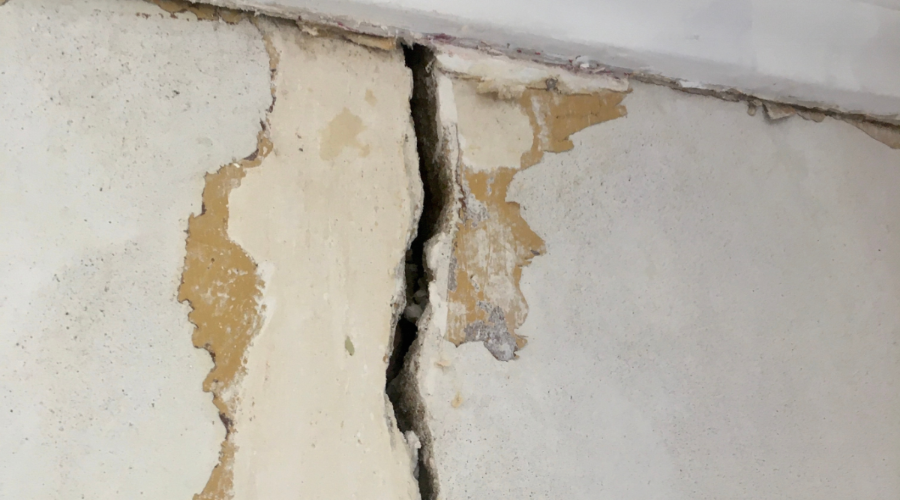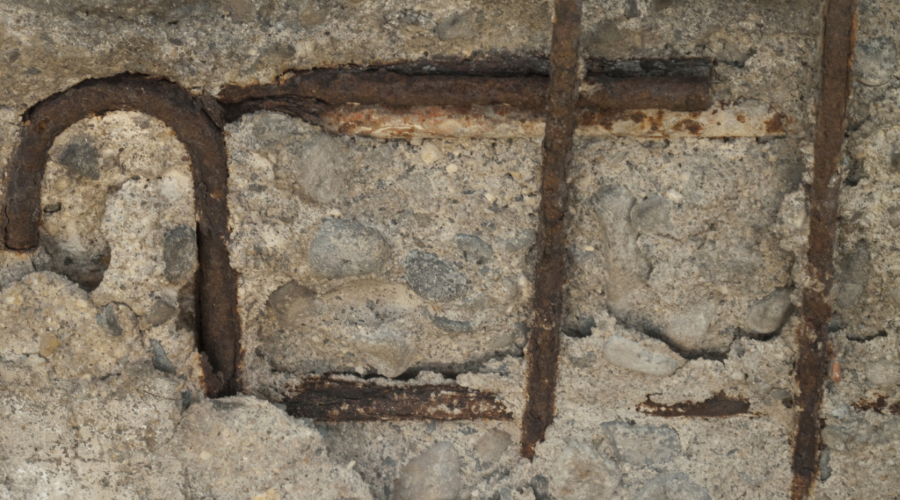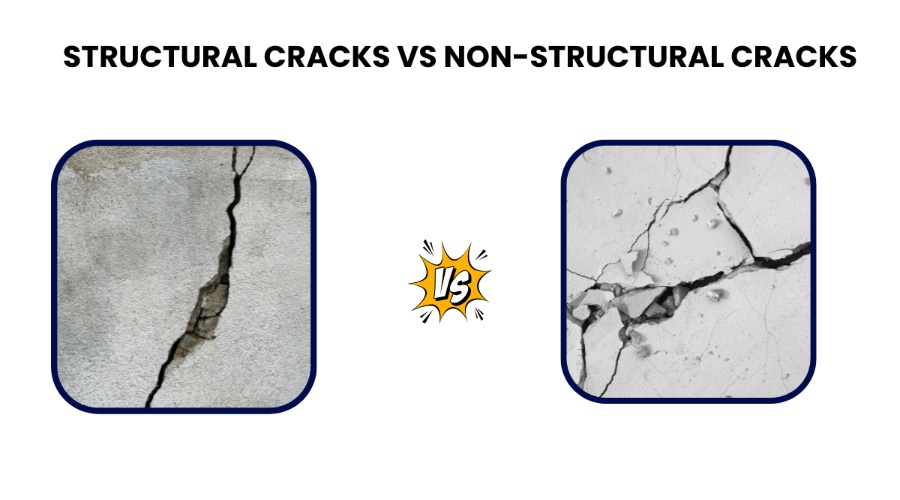Imagine walking through a cracked and damaged structure — Disgusting, right? Keeping a building that is free from cracks or damages is essential for any construction. However, cracks develop due to numerous reasons. Sometimes, they are just cosmetic issues, but sometimes they can be hazardous. In this blog, we are going to take a look at the dangerous structural cracks in detail.
What are Structural Cracks?
Structural cracks are more than just a cosmetic issue, these are cracks that occur on the load-bearing structure, such as walls, floors, ceilings, or foundations. These cracks indicate the underlying issues related to strength, stability, integrity, or safety. There are different types of structural cracks based on severity and cause, addressing them promptly can help prevent structural deterioration or even collapse.
Causes of Structural Cracks
- Inadequate site preparation, low quality construction materials and poor construction techniques can lead to structural cracks.
- Environmental variations in conditions such as temperature, moisture levels and soil changes produce excessive stress on the structure, thus resulting in the formation of cracks over time.
- Foundations with threshold settling, soil erosion or bad drainage can develop structural cracks.
- The excessive load or modification of a structure would cause excess stress in particular segments of the entire building, causing cracks.
Types of Structural Cracks
Plastic Shrinkage Cracks
These cracks are mainly caused by the rapid drying of concrete surfaces before they get properly cured. The rapid drying is caused by hot and dry weather or a lack of moisture in the concrete mix. The results are the development of a series of shallow, random cracks that affect the looks and durability of the concrete.
Settling Cracks
Cracks due to settlement, are those that develop when the soil under the concrete shifts or moves. Typical reasons for settlement cracks are insufficient soil preparation and soil erosion. These cracks not only have the chance of tripping but also lead to other types of cracks. Proper soil preparation, drainage, and installation techniques can generally prevent the formation of settling cracks.
Expansion Cracks

These cracks are caused due to the expansion of concrete due to the change in temperature and moisture levels. They usually occur in a straight line, running across the surface, especially on sidewalks, foundations, and walls. Potential water seepage through these cracks could lead to other cracks or damage. Proper installation techniques and usage of expansion joints can help prevent these cracks.
Overloading Cracks
These cracks often occur when a concrete structure is overloaded by heavy machinery, vehicles, or even foot traffic. This type of cracking is dangerous and detrimental to the structural integrity of both the concrete and the environment because it would require immediate addressing for safety measures. Proper weight distribution methods, providing reinforcement, and good maintenance can avert these cracks from forming.
Corrosion of Reinforcement

Corrosion occurs when the steel reinforcement bar within concrete begins to oxidize, leading to expansion and cracking of the concrete; all of this is mainly caused by moisture, salts, or other corrosive materials. This can prove to be a serious hazard to the entire concrete structure and anything adjacent to it. In such situations, the call for rapid remedial measures to limit any further damage and mitigate safety concerns is paramount.
Structural Cracks vs Non-Structural Cracks

| Aspect | Structural Cracks | Non-Structural Cracks |
| Impact on Safety | It affects the safety and stability of the structure. | Usually, it does not affect the overall safety and stability. |
| Cause | Caused by excessive loads, settlement, or material failure. | Caused by shrinkage, temperature changes, or minor settling. |
| Location | Often found in load-bearing structures like beams, columns, or foundations. | Often found in non-load-bearing elements like walls, floors and partitions. |
| Size and depth | These cracks are larger, deeper and noticeable. | These cracks are small and more superficial. |
| Repair Cost | It requires expensive repairs or professional intervention. | Generally less expensive and easier to repair. |
| Extension of Damage | These cracks can lead to progressive deterioration and even structural failure. | These cracks rarely lead to further significant damage. |
| Urgency of Repair | Needs urgent and prompt attention. | These cracks are often cosmetic and can be repaired over time, without urgency. |
Structural Crack Repair Methods
Epoxy Injection
Injecting epoxy resin into horizontal cracks in a concrete structure is a very popular repair method. It fills the cracks, stops water seepage, and ensures returning structural integrity. It is an efficient repairing technique and does well with narrow cracks in foundations, slabs, and walls.
Concrete Patching
This method fills large cracks or holes using a high-strength concrete mixture. This method works best for very wide and deep cracks in slabs, walls, or foundations needing immediate restoration of structural strength.
Carbon Fibre Reinforcement
This method uses carbon fiber strips or sheets that are applied to cracks in concrete to strengthen and stabilize the affected area. The carbon fiber is bonded to the surface using a special resin and becomes crucial when working with structural load-bearing members such as foundation walls, beams, and columns.
Grouting
Similar to epoxy injection, grouting is basically pumping cement grout into cracks or voids within the structure to help stabilize the adjoining materials and so on. This method also works well in controlling soil movements and placing the larger cracks or repairing the foundation.
Preventive Measures for Structural Cracks
- To prevent soil erosion or settlement, a proper drainage system must be installed so that water does not pool around the foundation.
- Using quality construction materials can further the durability and the longer life.
- Regular maintenance, along with prompt attention to cracks, can minimize sustainability risk.
- In moist soil areas, provide waterproof and humidity control coatings to prevent material damage.
- Adequate reinforcement with steel bars contributes to preventing cracks from arising due to stress or loads.
Conclusion
To sum it up, structural cracks can be dangerous and can seriously affect the safety of the occupants. Even small cracks indicate the underlying major issues, and timely addressing is of utmost importance, to prevent deterioration or collapse. It can be prevented as early at the construction stage and in the initial stages of cracking, to avoid costly repairs and ensuring longevity.

